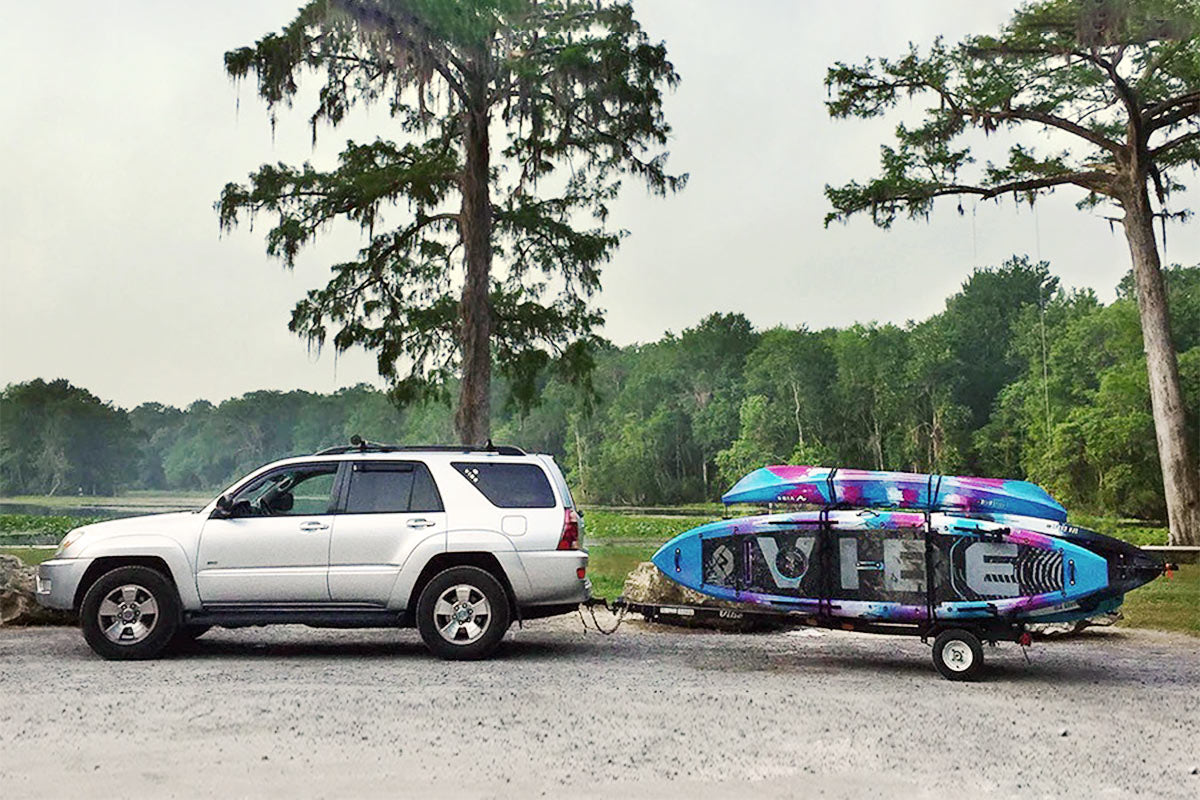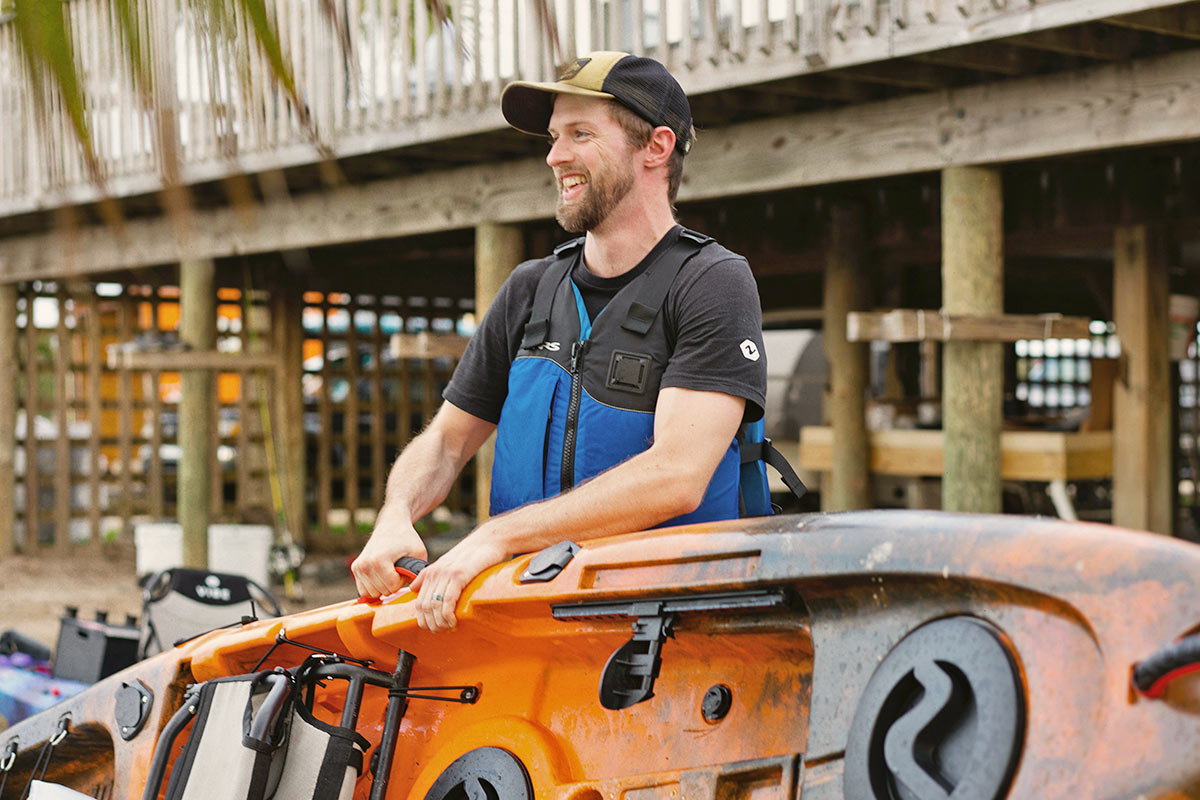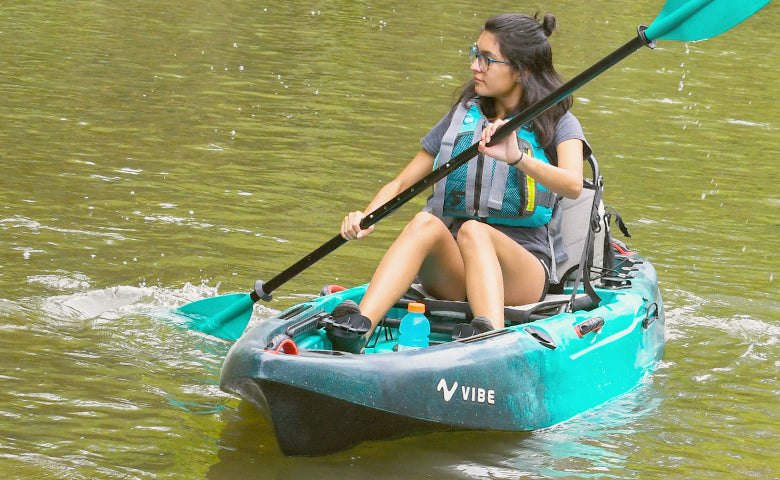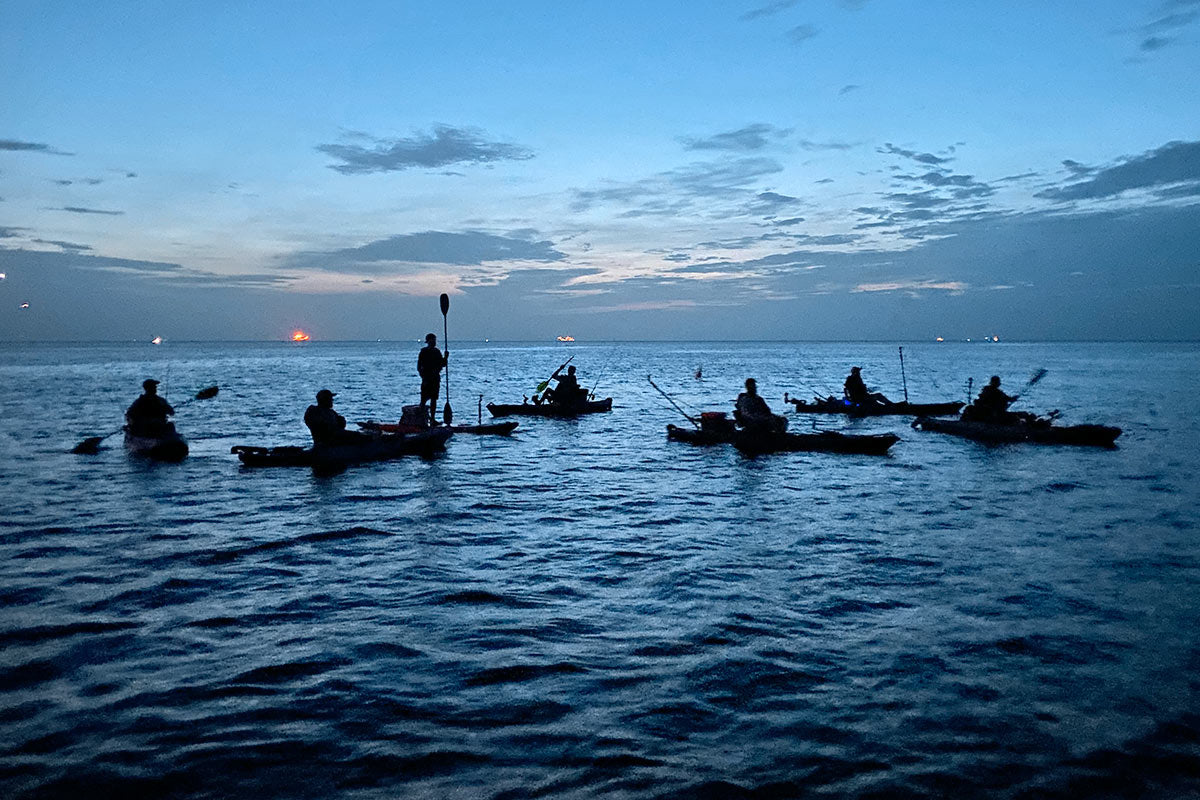How to Choose a Kayak Trailer

So you’ve finally pulled the trigger on that kayak that you’ve spent months researching. Congratulations. Do you begin outfitting, customizing and rigging your new ride to your liking? Sure, but one key ingredient that often times gets neglected or overlooked is transportation. What I mean by that is, how do you plan on transporting your kayak? Sure, you bought it and got it home probably by either throwing it in the bed of your pickup or by car topping it; both of which are perfectly fine methods for hauling kayaks. Or heck, maybe it was delivered to your door. But I’m here to talk about the luxury of using a trailer to get to your favorite watering holes.
Trailers are often times the best solution when it comes to transporting your kayak, or kayaks. First, the simplicity of loading a kayak onto a trailer is usually much easier than loading into the bed of a pickup or topping a car. Trailers are usually a bit lower to the ground, allowing you to easily slide your kayak onto the top of one. Also, you can typically get away with leaving most of your gear attached to your boat without having to break it down completely each and every time you hit the water. Carrying multiple kayaks is much simpler when a trailer is involved because having multiple kayaks means having extra gear and people. Having the extra room for your paddling partner(s) keeps the friendship long lasting. Besides, no one wants to be crammed against wet gear, or even possibly wet, fish slimed gear with the potential of getting hooked by a lure if you move the wrong way; trust me.
Now that you’ve decided that you would like to use a kayak trailer, the search begins. Remember that process that you indulged in when searching for the perfect kayak? Well, you’re bound to revisit it when it comes time for a trailer. Begin by asking yourself these questions to ensure that you acquire the best trailer to suit your needs.
Number of kayaks. First, you need to know the number of kayaks that you plan to haul at any given time. Just because you have one now doesn’t mean that you won’t end up acquiring more. And there’s also your family that may want to get in on the action or maybe your buddies’ will want to tag along on a day out on the water. Buying a trailer that has the option of being outfitted to hold a few kayaks may be a good idea.
Where you’re paddling. Are you in an area void of saltwater? Well then a steel or aluminum trailer may be all you need. If you plan on hitting saltwater more often, then consider a galvanized trailer. It will stand up against the deteriorating properties of the salt much longer than most anything else. If you find yourself with the luxury of fishing both fresh water and salt, then weigh your options and make the best possible decision. After all, a quick fresh water rinse after a day on the salt will help aid in prolonging your trailer’s life; even if it wasn’t built for the coast.
Towing capacity. The type of vehicle you’ll be pulling your trailer and payload with will greatly determine the weight of the trailer you can efficiently pull. A small car compared to a full size SUV will weigh heavily on which trailer will best suite your needs. It’s best to refer to your owner’s manual to figure out your specific vehicle's towing capacity.
Buy new or used. Figure out your budget before you go trailer shopping. The difference between buying new and used can be substantial. If you’re a savvy do-it-yourselfer, then consider taking an old boat trailer, jet-ski trailer or something similar and converting it into your own masterpiece. A few crossbars and some padding is really all it takes to effectively turn a small, old trailer into something useful. Buying new does come with the peace of mind that everything on it is in proper working order; i.e. bearings, tires, leaf springs, etc.
Right-On Trailer Company makes an affordable and lightweight kayak trailer in both aluminum and galvanized steel and also comes in single and multi kayak setups; perfect for light duty cars, multi kayak families or salt water applications.
These few questions will put you on the right track to kayak transport bliss. Regardless of whether or not you buy new or used, proper trailer maintenance will take you a long way, literally. Keeping your bearings greased, tires inflated properly, and salt water rinsed off in a timely manner will ensure that your investment will last as long as possible. Fully inspect the trailer prior to each use and look for rust, cracks in the frame, tire pressure, as well as any signs of uneven wear, cracking or missing/loose lug nuts and all of your wiring. Owning a kayak trailer is a great alternative to having to heave your kayak up on top of your car or taking up precious cargo space in the bed of your truck.
- Harry Smith




